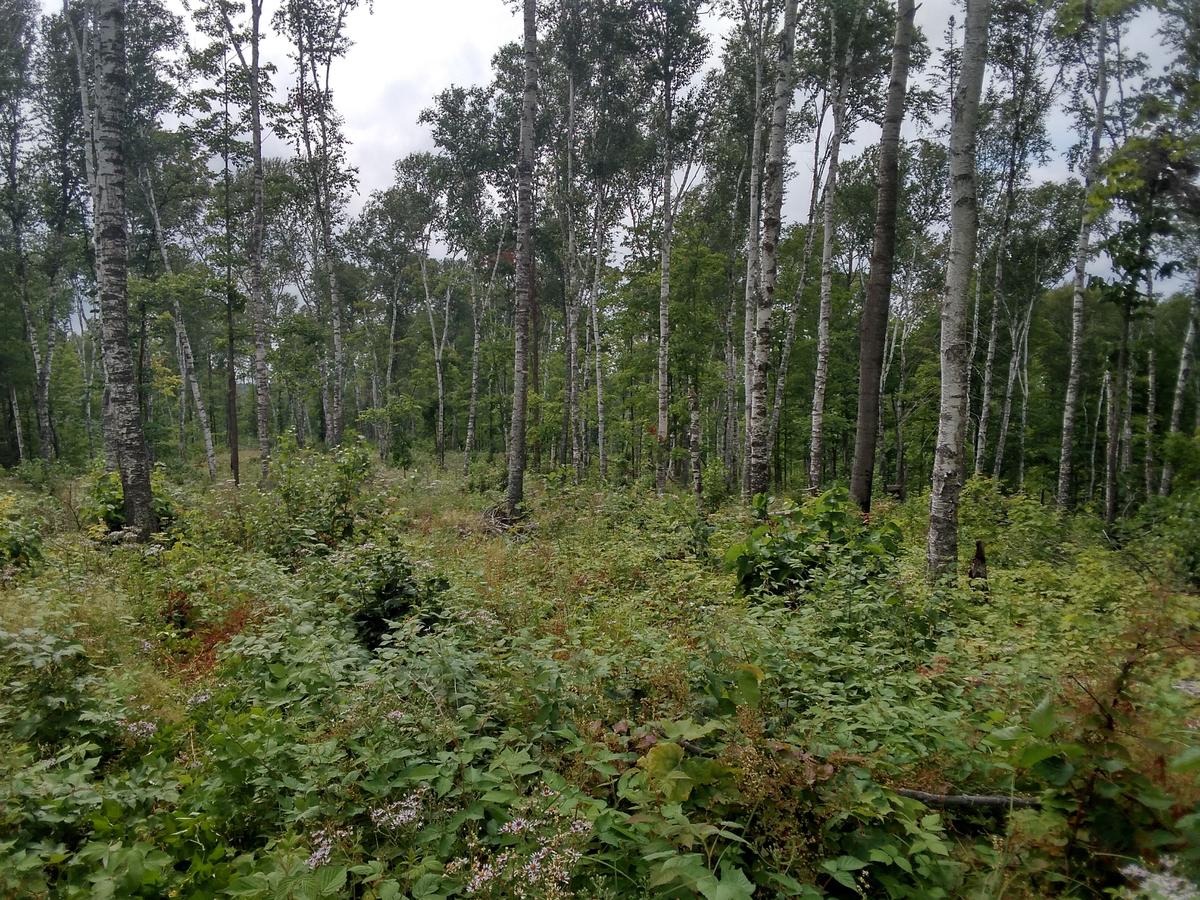Overview
The purpose of this case study is to analyze the differences in paper birch regeneration between a shelterwood versus a seed-tree method.The Minnesota DNR, in the Cloquet Area, doesn’t usually manage exclusively for paper birch due to the presence of aspen in most stands. Therefore, birch seed tree harvests are a common practice to attempt to promote natural birch regeneration. The desired future condition of these harvests is to maintain an aspen covertype while increasing or maintaining the paper birch component of the stand. The mixed composition of aspen and birch is why the birch seed tree method was selected for stand t04919w1040155 A56 in the case study.
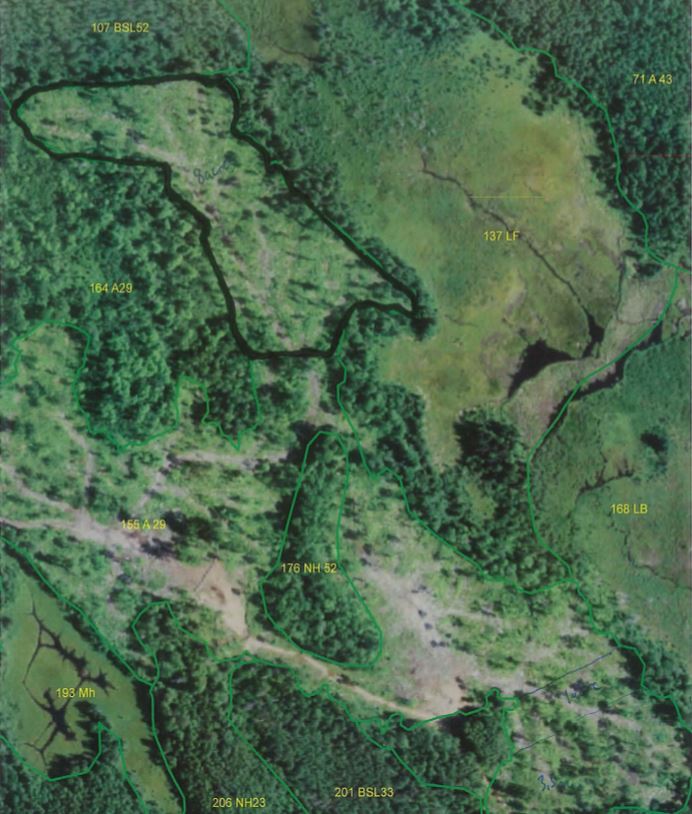
Figure 1: Seed tree treatment area map
The stand selected for the birch shelterwood method, t04919w1040080 Bi59, was a purer birch stand offering an opportunity to intensively manage for paper birch. The Wisconsin DNR recommends shelterwood harvests as a generally accepted practice for paper birch regeneration. The Wisconsin DNR Silviculture handbook states that a shelterwood harvest provides enough shade to prevent desiccation and protect against competing plant growth.
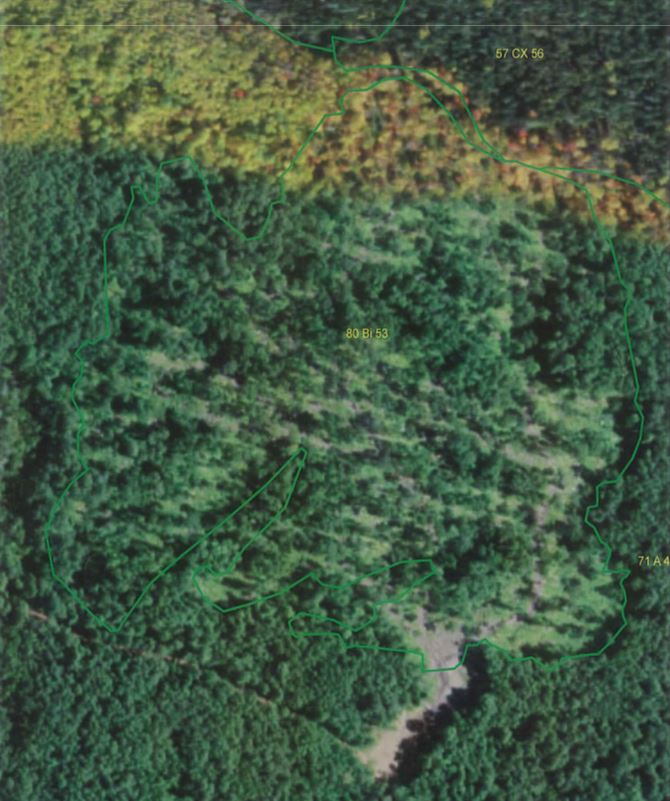
Figure 2: Shelterwood treatment area map
For this case study, regeneration data was collected from both a seed tree and a shelterwood harvested stand in the Fond du Lac state forest. These two stands are classified as MHn35 (Northern mesic hardwood forest) according to the Native Plant Communites of Minnesota Field Guide. The close proximity and same habitat classification of the stands provided an opportunity to compare treatments on similar sites.
Silviculture Objective(s)
The objective of this harvest was to maintain paper birch as a component of these stands and document the extent of paper birch regeneration. This site was used to compare effectiveness of Paper Birch regeneration in a shelterwood harvest vs a seed tree harvesting method. It is a management objective of the Northern Superior Uplands Forest Plan to maintain or increase the paper birch covertype where possible.
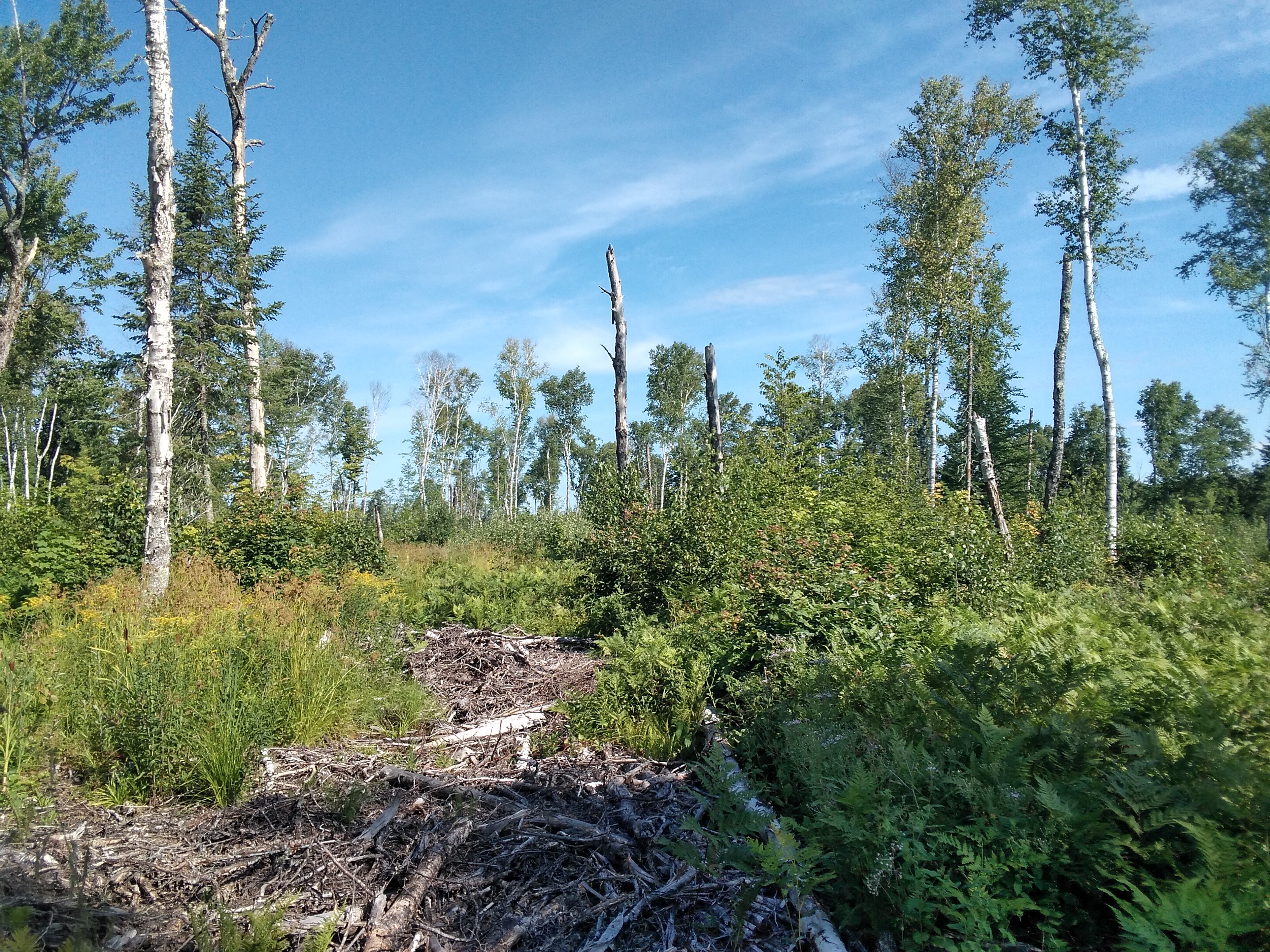
Figure 3: A view of the Paper Birch seed-tree harvest that was examined in this case study
Pre-treatment stand description and condition
Stand establishment and management history:
Stand may have been logged in the 1930’s then established post logging slash or wildfire.
Pre-treatment species composition:
See prescription section.
Pre-treatment forest health issues:
Chaga, Sterile Conk Fungus
Landowner objectives/situation:
Revenue generation, capture volume of existing old stand and regenerate new vigorous stand of similar productivity and diversity with an increase in hardwood quality.
Silviculture Prescription
The prescription for the shelterwood site followed the Wisconsin DNR guidelines for a paper birch shelterwood harvest. The guidelines state that 30-60% residual crown cover of dominant and codominant trees is the goal. Roughly 43% of paper birch on the site were reserved and 38% of the total basal area on the site was reserved in total. Paper birch trees selected for reserve were healthy, large crowned, good form, high quality trees expected to promote the best genetic diversity of seed for the next stand. Dead/dying cavity trees were reserved on the site to serve as wildlife habitat. Other species such as red oak and basswood were reserved to promote diversity within the site. Paper birch and basswood selected to be cut in the initial shelterwood harvest were painted. All aspen present on the site were reserved to reduce competition of root sucker aspen regeneration. Full tree skidding was required on the sale to facilitate scarification during logging operations. Additional post-harvest scarification, “Salmon Blading”, was planned for this site as well. The timing of the overstory removal harvest is dependent on regeneration, the Wisconsin DNR guidelines state that the removal harvest should occur in 2-3 growing seasons after the initial harvest.
The seed tree harvest was done under similar summer conditions, and also required full tree skidding to facilitate scarification. On this site marked paper birch trees were harvested, leaving unmarked healthy, large crowned paper birch of good form as seed trees. All aspen, maple, basswood and balsam fir were harvested. All white pine, red oak, yellow birch were reserved as well as 1 large maple or aspen per acre as den/wildlife trees. The amount of reserve trees was roughly 16% of the stands pre-harvest basal area.
For both treatments, late summer/ early fall dry logging conditions were prescribed to coincide the soil scarification with seed dispersal, as most paper birch seed is dispersed during the months of September through November.
Table 1: Harvest and reserve totals by treatment and also pre-harvest totals.
| . | Shelterwood area (24 ac) | Shelterwood area (24 ac) | Seed Tree area (8 ac) | Seed Tree area (8 ac) |
| Pre-treatment Totals | BA (ft2/ac) | Volume (cds/ac) | BA (ft2/ac) | Volume (cds/ac) |
| 119.5 | 34.7 | 105.2 | 25.6 | |
| Harvested | BA (ft2/ac) | Volume (cds/ac) | BA (ft2/ac) | Volume (cds/ac) |
| Marked Paper Birch | 40.3 | 11.5 | 21.8 | 3.9 |
| Sugar Maple | 22.6 | 5.3 | 3.6 | 0.9 |
| Red Maple | 8.5 | 2.1 | 9.0 | 2.2 |
| Marked Basswood | 2.2 | 0.7 | 4.5 | 1.0 |
| Aspen | 0.0 | 0.0 | 39.0 | 11.6 |
| Balsam Fir | 0.0 | 0.0 | 10.0 | 2.5 |
| Harvested Total | 73.6 | 19.6 | 87.9 | 22.1 |
| Reserved | BA (ft2/ac) | Volume (cds/ac) | BA (ft2/ac) | Volume (cds/ac) |
| Paper Birch Unmarked | 33.0 | 10.7 | 17.3 | 3.5 |
| Aspen | 8.1 | 3.0 | 0.0 | 0.0 |
| Basswood Unmarked | 2.2 | 0.7 | 0.0 | 0.0 |
| Red Oak | 2.2 | 0.6 | 0.0 | 0.0 |
| Balsam Fir | 0.4 | 0.1 | 0.0 | 0.0 |
| Reserved Total | 45.9 | 15.1 | 17.3 | 3.5 |
What actually happened during the treatment
For the shelterwood, harvesting began on August 2nd 2018, and ended on August 21st. The treatment went as planned and created a moderate amount of scarification due to full tree skidding being required. Almost all marked trees were removed from the site with the exception of some trees that the loggers were unable to harvest due to slope limitations. Soil conditions were satisfactory for a summer harvest, and no rutting occurred. Additional scarification with a fire dozer and salmon blade was planned for this site that fall, post-harvest, but there was a long rainy period after the harvest that made it impractical to attempt to perform any scarification due to concern of rutting and compaction damage due to saturated soils.
The seed tree harvest went similarly well, without many difficulties. Harvesting occurred mainly in August and September of 2018. Full tree skidding, and seed tree distribution was satisfactory. No rutting occurred, and site conditions post-harvest appeared satisfactory. Mechanical scarification was not planned for this site, but upon conducting the regeneration survey, we determined that full tree skidding may not have provided sufficient scarification for establishment of a seed bed for birch regeneration.
Post-treatment assessment
Regeneration data was collected using the State of Minnesota ECS Regeneration/BA Plot worksheet Version 2.0 during August 2020. 23 random plots were sampled over 24 acres in the shelterwood harvest area, along with one control in a 1 acre reserve area representative of the pre-harvest conditions. 10 random plots were used in the seed tree harvest area of 8 acres. Areas of dense aspen regen were avoided in the birch seed tree so that locations where birch had a chance to regenerate could be evaluated. All plots had a 6.8 foot radius, 1/300 acre sample.
Table 2: Stocking in trees per acre, regenerants (<1 ft tall):
| Regenerants (<1 ft, TPA) | Shelterwood Harvest | Shelterwood Harvest Reserve Area | Seed Tree Harvest |
| Paper Birch | 8178 | 0 | 870 |
| Sugar Maple | 1930 | 10500 | 1620 |
| Red Maple | 926 | 0 | 1620 |
| Basswood | 39 | 0 | 60 |
| Quaking Aspen | 104 | 0 | 60 |
| Bigtooth Aspen | 0 | 0 | 0 |
| Northern Red Oak | 26 | 0 | 90 |
| Balsam Fir | 0 | 0 | 0 |
| Eastern White Pine | 0 | 0 | 30 |
| Yellow Birch | 0 | 0 | 0 |
Table 3: Stocking in trees per acre, seedlings (>1 ft tall, DBH <1 inch)
| Seedlings (>1 dt tall, <1" DBH, TPA) | Shelterwood Harvest | Shelterwood Harvest Reserve Area | Seed Tree Harvest |
| Paper Birch | 1278 | 0 | 720 |
| Sugar Maple | 3730 | 23700 | 1350 |
| Red Maple | 1083 | 0 | 930 |
| Basswood | 130 | 300 | 540 |
| Quaking Aspen | 209 | 0 | 390 |
| Bigtooth Aspen | 130 | 0 | 150 |
| Northern Red Oak | 13 | 0 | 540 |
| Balsam Fir | 0 | 0 | 30 |
| Eastern White Pine | 0 | 0 | 30 |
| Yellow Birch | 0 | 0 | 30 |
Table 4: Post-treatment basal area, ft2/ac
| BA, ft2/ac | Shelterwood Harvest | Shelterwood Harvest Reserve Area | Seedtree Harvest |
| Paper Birch | 26.1 | 130 | 10 |
| Sugar Maple | 0.4 | 60 | 0.1 |
| Basswood | 1.7 | 0 | 0.2 |
| Quaking Aspen | 3 | 0 | 0 |
| Bigtooth Aspen | 0.9 | 0 | 0 |
| Northern Red Oak | 1.7 | 0 | 0 |
| Total Residual | 33.8 | 190 | 10.3 |
Plans for future treatments
A removal harvest on the shelterwood site is expected to be planned in winter 2020-2021 or winter 2021-2022. The harvest will most likely be an informal sale due to total residual volume being under 500 cords and the desire to time the harvest with frozen ground soil conditions and sufficient snow pack to protect paper birch regenerants and seedlings on site. Additional scarification may happen before the removal harvest, but is budget and weather dependent. If possible this scarification will be done with a salmon blade, which is a device that can be connected to the front end of smaller crawler dozer. It has multiple teeth that mix the soil and duff layer when pushed through the soil about 2’’-5’’ deep.
Costs and economic considerations
Shelterwood Timber Sale Revenue: 460 Cds = $7,117.65 on 24 acres = 19 cds/ac or $296.57 / acre. Additional revenue will be added from the overstory removal informal sale.
Seed Tree Timber Sale Revenue: 176.8 Cds = $3,628.99 on 8 acres = 22 cds/ac or $453.62 / acre.
If additional scarification does occur it will most likely be done using a salmon blade, which is estimated to cost $150-$300/acre.
Climate Adaptation Considerations
Paper Birch and Sugar Maple are the two most abundant species on these sites. According to climate change response data provided by the Minnesota DNR, both species are predicted to remain stable in a wetter climate on this plant community. Paper birch is predicted to slightly decrease in abundance, while sugar maple is expected to increase in abundance in a warmer climate on this plant community. Leaving some sugar maple on this site allows for increased resiliency and long term adaptability for a future where climate change may have a drastic effect on the native tree species. Also sugar maple due to its shade tolerance can form an additional cohort, intermediate and under the birch canopy, which maximizes site productivity and volume yield potential as it can grow in a different ecological niche that the shade intolerant paper birch. The maple subcanopy increases forest structural diversity and heterogeneity, which is important for many birds species and other ecological values.
Summary / lessons learned / additional thoughts
There is a noticeable difference between the studied shelterwood and seed tree harvest. Birch regeneration in the shelterwood harvest is roughly 10 times the amount found in the seed-tree, especially in the regenerant category. Many of the regenerants were found underneath competing vegetation, most notably red raspberry and bindweed. On the shelterwood site the competition of bindweed was sampled as a medium low presence with an average height of 1.1 ft. Raspberry was measured to have a medium low presence with an average height of 2.1. But when you put the two together as they were sampled on the site you have a medium to medium-high amount of competition for those paper birch seedlings with an average height of 1.4 feet to grow through. On the seed-tree site the competition averaged a medium-low presence for bracken fern with an average height of 2.6 feet and beaked hazel had a low presence and average height of 3.3 feet. Together competition was at medium level for bracken fern and beaked hazel with paper birch at an average height of 2.3 feet. Although some of the regenerants may not be able to recruit through the competition to become established trees, this still shows that the shelterwood harvest had a significant positive effect on germination. This leads us to believe that in this specific situation, the shelterwood harvest provided a better environment for the germination of paper birch seed.
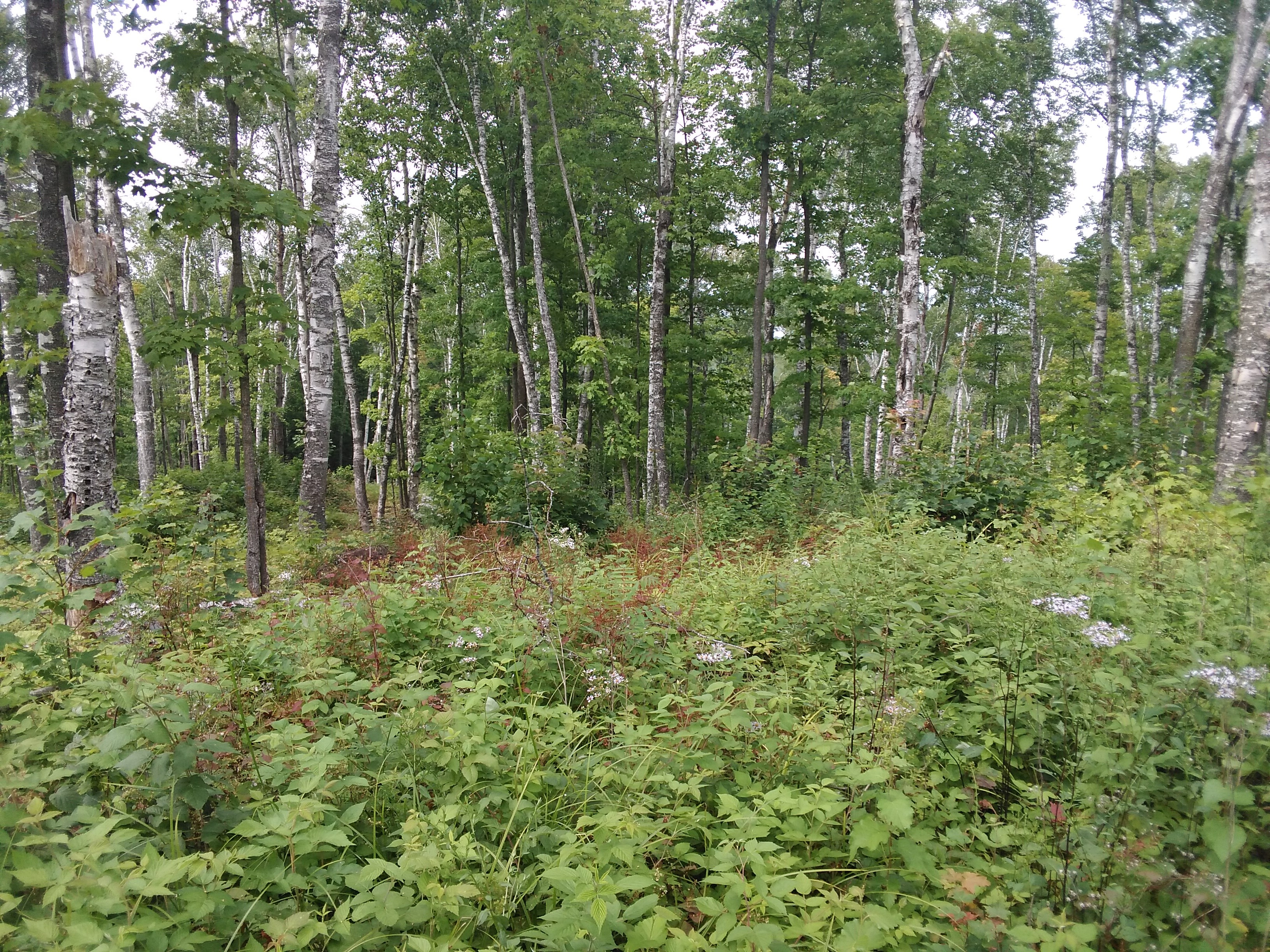
Figure 4: Raspberry competition at the observed shelterwood harvest
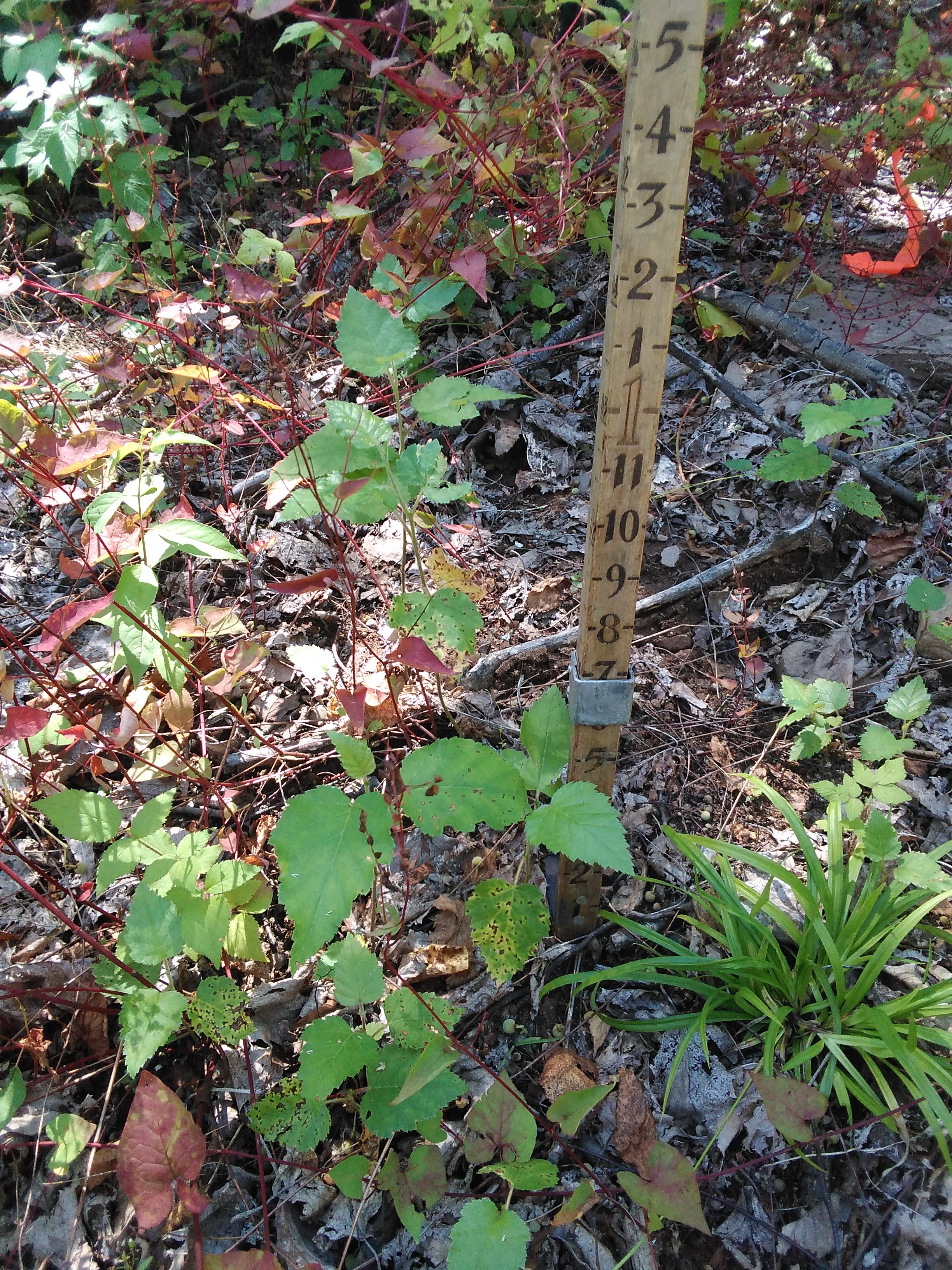
Figure 5: Image of Paper Birch regenerants as described in this case study
For the shelterwood, Wisconsin DNR guidelines recommend a minimum stems/acre of 2000 for paper birch stands within 1-2 years of regeneration. The guidelines qualify a stem as an established seedling when it reaches 1-2 feet in height for paper birch. Our data show 1278 seedlings per acre, which doesn’t meet these requirements. However with over 8000 regenerants under 1 foot tall it is likely at least 10% of these may grow to become 1-2 feet tall in the growing season or after the canopy is removed, depending on what occurs first. Also if you consider the presence of 4800 maple seedlings in addition to the paper birch and use the regeneration stocking guidelines for northern hardwoods from the WI DNR, then this stand meets or will likely meet the criteria for sufficient regeneration by that standard of 2000-5000 seedlings 2-4’ 3-8 years post-harvest. The main goal of this harvest was to retain paper birch as the dominant species with a component of maple. The stand appears to be ready to plan the final overstory removal harvest within the next two years.
Our sampling on the seed tree harvest was biased. We avoided significant areas of Aspen regeneration. These pockets of aspen would have likely choked out any paper birch regeneration that may have been present in the same area. Even with this bias, we still discovered significantly less paper birch regeneration with only 720 seedlings sampled and 870 regenerants. We aren’t certain exactly why there was less birch regeneration but we can speculate. Some possible causes could be the lack of adequate scarification which is necessary to prepare the appropriate seedbed for birch to germinate. It could also be possible that the lack of shade affected birch germination negatively and led to the dessication of germinates. Competition with other plant species could have made it more difficult for paper birch seedlings to persist on the site. Most of the reserve trees in the seed tree harvest were paper birch, and the amount of trees that were left should have been sufficient for a seed tree harvest, so lack of seed or quality of seed trees likely wasn’t an influential factor.
On a positive note an important difference in regeneration in this seed tree stand is the greater percentage of birch and other species originating from stump sprouts. Paper birch, red maple, sugar maple, and basswood were all observed to be stump sprouting, and the sprouts were significantly more vigorous and taller than the observed seed origin seedlings. This is something worth monitoring throughout the future of the stand. The sprouts are above the competition, but because there are so many growing so close together from the same stump, it could lead to a decrease in timber quality if many of the stems remain vigorous and crowd each other for space and nutrients. Stems from sprout origin have less chance of become bolt quality as the cluster of stem usually remain smaller in diameter and grow more pulpwood than bolts. In contrast, the shelterwood birch regeneration method should grow a future forest with a greater percentage of seed origin birch which should yield higher quality future wood products.
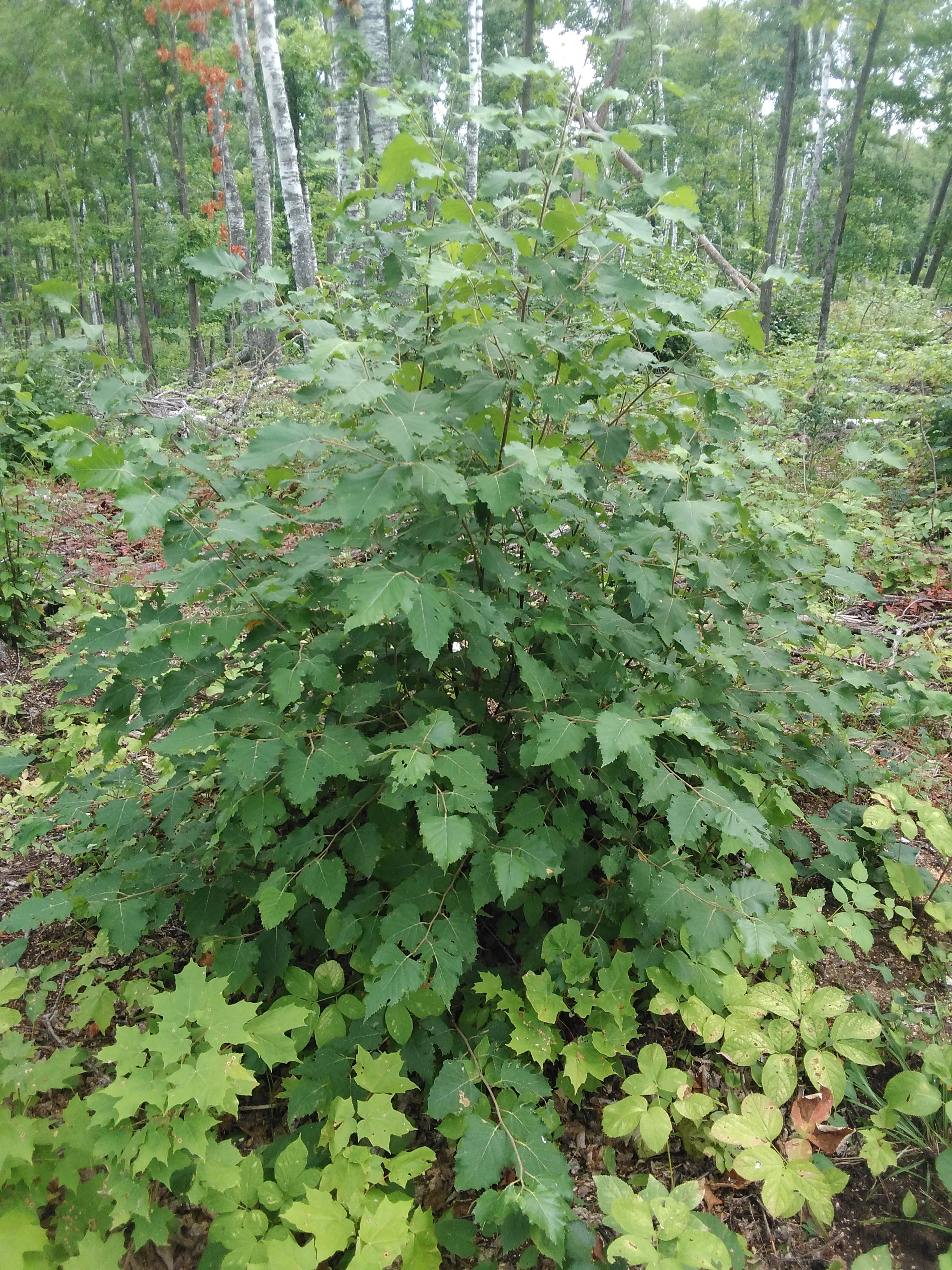
Figure 6: Paper Birch stump sprouts as seen in the observed shelterwood harvest
Paper birch regenerates well when bare mineral soil is exposed, and no additional scarification occurred on this site, other than what was disturbed by equipment during the timber harvest. Birch regeneration on this site was substantial in areas that had been scarified, but unscarified areas showed little to no paper birch regeneration. This leads us to believe that if paper birch is a desired future species, scarification pre or post-harvest should be done in most situations when possible to maximize the potential for birch seed germination and set back competition. Mechanical scarification may still occur on this shelterwood site before the final overstory removal, if the site conditions allow. We will focus this scarification near the reserve trees that did not receive adequate scarification during the initial timber harvest. This additional post-harvest scarification could provide another significant increase in the amount of paper birch regeneration and result in a uniformly stocked site.
Paper birch is an important part of forest diversity, and there are concerns about its decline as a speciesacross the forested landscape of Minnesota.Climate change may exacerbate this problem, since the state is on the southern end of the paper birch’s range. This case study has provided some insight to combat regeneration issues that may appear as the effects of climate change become more visible. The shelterwood harvesting method could potentially become a necessity for paper birch regeneration as average temperatures continue to rise.
Overall, this stand will be a diverse mix of species as it matures, especially if it stays consistent with the collected regeneration data. The paper birch reserve trees did well seeding in and providing shade for seeds to germinate. Additional scarification after the harvest would likely increase the amount of paper birch regeneration, and should be an important part of management plans for future birch shelterwood harvests if a greater birch density is desired in the stand.
Supplemental content
Avenza map of stand area
